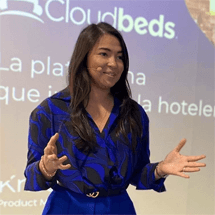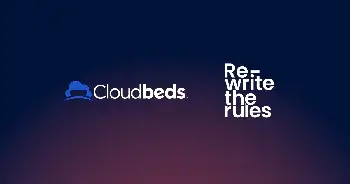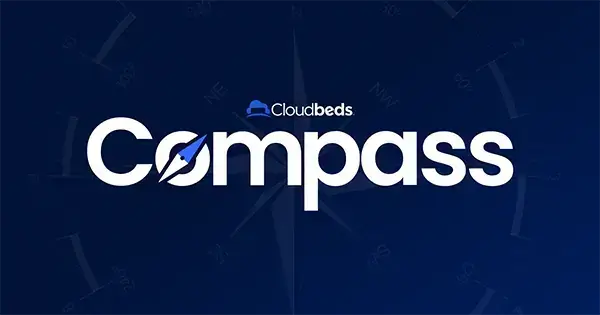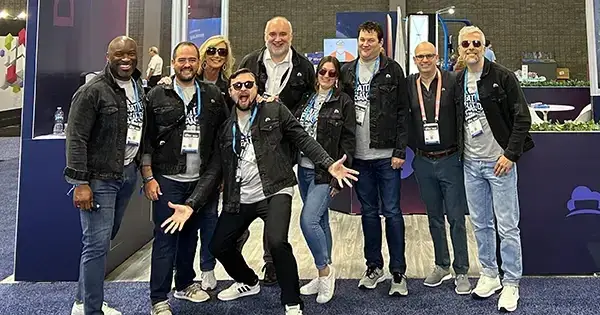
By Kristy Espat
A hotel standard operating procedure (SOP) protects your staff, guests, and business by structuring your operations for efficiency, accuracy, safety, and consistency.
In an industry with high employee turnover, these procedures align staff with your property’s ideal service and safety standards. SOPs also make training staff much easier because they serve as a fixed set of rules and steps to follow that you can consistently refer back to.
Hotel SOPs also ensure your property maintains a competitive guest experience. When guests stay with you, they expect a consistent experience. Especially for return guests, any inconsistencies in service quality or procedures can have a negative influence.
In this article, we cover how to write a standard operating procedure that your hotel staff will actually use, including some SOP examples from my hotels.
Firstly, if you’d like to customize Cloudbeds’ ready-made hotel SOPs and checklists, download them here:
- Housekeeping SOP
- Front office SOP
- Food & beverage SOP
- Engineering & maintenance SOP
- Payments SOP
- Distribution SOP (OTAs, wholesalers, and travel agents)
- Establishing an online presence SOP (hotel marketing & social media)
What is a standard operating procedure?
A standard operating procedure (SOP) is a shared set of instructions used in the hospitality industry that describe how to complete a specific task. Think of it like a recipe: each step must be followed to obtain the end result, and when each step is followed consistently, the outcome is the same – regardless of who makes it. It’s also about safety: when each step in the recipe is followed, the dish should be safe to eat.
Hospitality standard operating procedures are the recipes that keep your operations running smoothly, safely, and efficiently – regardless of which employees are working during a particular shift.
In the hotel industry, SOPs are more than just checklists. They document workflows that may reach across hotel departments and often involve high-visibility, high-risk, or otherwise high-impact routines. And, just like a recipe, they detail each step so that it’s clear how to get the desired outcome.
How to write a hotel standard operating procedure?
Unfortunately, SOPs are often overlooked until it’s too late. In many cases, it only becomes apparent that a procedure is needed after a dangerous, embarrassing, or costly incident has occurred. So don’t wait to get started on writing your hotel standard operating procedures! It’s worth the investment.
For new hoteliers and hosts, it can be intimidating to begin building standard operating procedures. Don’t let that stop you from getting started! Start small, build momentum, and enjoy the process. You’ll be surprised at how much you learn about your workflows, and how effective these procedures can be at improving operational efficiency and overall profitability!
Here are a few steps to follow to prepare SOP documents for your hotel:
Step 1: Identify specific areas that could benefit
In smaller properties and hostels, there may be less distinction between departments, so this process could be broken down by either role or function. It could also simply be divided by front-of-house and back-of-house.
Consider your:
- Front desk team
- Concierge team
- Food & beverage service team
- Housekeeping team
- Maintenance team
- Sales and marketing team
- Human resources team
Step 2: Identify tasks for each department
Once you’ve identified which departments could benefit from an SOP, map out daily operations. This will help you identify repetitive processes that should be standardized. To do this:
- Ask staff for their input. Your employees will know better than anyone which processes could benefit from more clarity and consistency.
- Make a list of common routines. Look for repetitive tasks that require precision and safety/legal processes that should follow a standard procedure.
- Prioritize by impact. You want to start with the areas that are high visibility, high-impact. These are usually the areas that directly impact the hotel guest experience (like the front desk), as well as health and safety, crisis communications, and disaster preparedness.
Step 3: Identify your audience
You should end up with a list of at least 2-3 key processes for each department that reflects the most often-repeated and highest-visibility tasks. For each SOP, you’ll want to consider the following:
- Who’s the audience? Put the end-user first so that the procedure is accurate, relevant, and easy to use. This is especially important when it comes to safety-related SOPs that may be used under challenging circumstances, for example, an injury or natural disaster.
- Are there any language barriers? If so, consider using images alongside the text; for example, use a map with arrows pointing to exits for fire escape routes. SOPs are useless if the end-user can’t understand them!
- Is this a new way to work or simply documenting an existing process? When introducing new work procedures or tasks, you’ll want to schedule additional training and implementation time (though it’s always a good idea to provide refresher training to your team members on a regular basis).
Step 4: Document your procedure
The easiest way to begin is to talk to employees and observe how a task is currently being done. Then, write down the specific steps and modify them, if necessary, before finalizing the steps into clear guidelines. The observation process encourages team involvement and offers a direct view of how people work. A collaborative process makes it more likely that staff will find the SOPs helpful.
As far as formatting your hotel’s standard operating procedures, some may be simple checklists, while others are numbered steps or bulleted lists or even made up of multiple components and paragraphs of instructions. As a general rule, try to make the SOPs visual and not too word-heavy so that they’re easy to read and use. For more intricate SOPs, you may consider using a flowchart to help staff quickly assess the right path.
The SOP format really depends on the complexity of the procedure, as well as how your team will be accessing it (e.g., paper versus tablet or mobile). While having digital copies of SOPs is useful and helps with widespread accessibility, it’s recommended that you have several laminated SOP printouts around the property in case the power goes out.
When in doubt, test it out. Put your SOP in the hands of a new hire to see if it’s written in a way that can be easily understood and implemented.
4 tips for effective SOPs
It’s important to create SOPs that your staff actually refer to – don’t have it be just another piece of paper stuffed into a drawer. To make your SOPs more useful and enticing, here are a few tips.
- Use natural language. It can be tempting to use corporate jargon when creating SOPs, but doing this will make it difficult for staff to digest, especially in stressful situations. Use your hotel brand’s voice when writing your SOPs so staff can relate and easily understand what’s being said.
- Be succinct. Only detail what’s necessary and get straight to the point. Your team won’t have time to read through pages of documentation, so ensure only high-quality information is included.
- Use visuals and highlight key points. It’s a lot easier to digest information when it’s broken down into lists or bullet points, highlighted, and/or supported by visuals. Some people learn better through visuals, while others prefer to read text, so ensure you have a mix of both in your SOPs.
- Introduce SOPs during employee training. Spend time going through relevant SOPs for each new hire. Going through processes and procedures is one of the best ways to familiarize new employees with your hotel and can help you identify areas that need clarification or improvement.

Example: The SOP of an independent hotel
To illustrate how this plays out in a real hospitality operation, let me share a bit about the hotel SOPs we use at my properties. My husband and I run hotels in Peru, Germany, and Spain. Each country has its own culture, which is reflected in how rigorous our SOPs are. In Germany, for example, staff expect more structure, so we give our employees there more guidance on day-to-day procedures than we may do elsewhere.
When we took over the hotels, one of the first things we changed was the hotel management software to Cloudbeds because we found the system to be so modern and easy to use. We had to completely change our SOPs and retrain our staff, which might seem like a hassle, but since the system is more intuitive and the processes are shorter, it was actually a pleasant experience for us and our employees.
Our SOPs relate mostly to emergency situations, regulations, legal liability, and guest experience. We focus on “what to do,” guiding staff through specific situations, and then grouping them by department. Here’s how that looks:
Emergency SOPs.
Emergency SOPs apply to exceptional circumstances. Since they may not happen often, staff won’t have any muscle memory. That makes it especially important for them to have SOPs. We actually had a conversation with our insurance agent to identify the most likely cases to document first.
- What to do in case of injury
- What to do in case of sickness
- What to do in case of death
- What to do in case of fire
- What to do in case of a very intoxicated guest (mostly applicable to our hotel in Munich during Oktoberfest)
- What to do if a guest damages a room (also mostly Oktoberfest-related)
- What to do when a guest needs special assistance
- What to do in case of natural disaster
- What to do in a power outage
Operational SOPs.
Operational SOPs relate to day-to-day operations, such as guest interactions, and reflect both the needs of individual properties and the local regulations. For example, in both Spain and Peru, we need to hand in a police report every night, Iisting all the guests staying in the hotel. So at those two properties, we have specific SOPs on how to check in a guest and request their passport, as well as how to submit the police report.
Generally, the front desk benefits the most from hotel SOPs because they’re at the property’s front line. They deal with happy and unhappy guests and must know how to react, especially in emergencies. In our experience, the front desk team is also the most difficult to train. It’s an entry-level job, and staff often need to learn the craft from zero. Our operational SOPs include:
- Late check-out procedure
- Early check-in procedure
- Extra cot in a guest room (pricing – applicable rooms, etc.)
- What to do if a guest complains about noise ( All our hotels are historic buildings in the city center of touristic cities so noise is an issue we cannot avoid and have to deal with frequently – interior rooms are quiet but don’t have as nice of a view)
- What to do in case of overbooking (Cloudbeds has helped us avoid these altogether)
- What to do in case a payment is charged twice
- What to do in case a client does not pay
- How to deal with an angry guest
- How to request a guest review
Maintenance and Housekeeping SOPs.
Maintenance and housekeeping SOPs ensure that your property is always clean and in proper working order so that there are no surprises regarding the quality of your rooms and common areas. Our maintenance SOPs were created with the help of a staff member in Germany who’s been working in hotel maintenance for over 30 years. Housekeeping benefits from having both SOPs and hotel maps of where to start and how long to take, as well as a checklist.
- What to do if the elevator stops working
- What to do if there’s a plumbing issue
- What to do if there’s a problem with a window/door
- What to do if there’s a problem with an electronic (e.g. TV)
- What to do if there’s a problem with lights
- Preventive maintenance
- What to do if the WiFi drops
- Room cleaning checklist
- Bed
- Trash bin
- Bathroom
- Minibar
- Towel/sheet procedure – we try to encourage guests to reduce water consumption – only towels on the floor get washed and sheets only get changed upon request
- VIP guest housekeeping
- Room inspection
- Special request room revision
- Pest control
- What to do in case of a bed bug outbreak
- Signs of a possible pest issue
HR/Employee SOPs.
Finally, there are HR or employee SOPs that guide how management, guests, and staff interact. Just like other SOPs, these protect your business from a liability standpoint, ensuring that everyone is treated the same according to a common policy. In addition to the SOPs below, we also have staff policies for uniforms and requesting time off.
- How to onboard a new recruit
- How to terminate an employee
- What to do if an employee doesn’t show up for work
- What to do if an employee violates policies
- What to do if one employee complaints about another (verbal abuse, sexual harassment)
- What to do if an employee is accused of stealing
Proactively update SOPs
As you can see, there are many tasks and procedures that can be outlined in a hotel’s standard operating procedure. You must determine which ones are the most relevant for you. The general rule is to focus first on high-visibility and high-liability areas. Ensuring a consistent process in these cases will always provide the best return for independent hotel operations.
One final step: remember to revisit your hotel SOPs regularly! A standard operating procedure in hospitality must adapt to changing terms and conditions, strategic updates, and new technologies. For example, we’re adding 34 rooms to our hotel in Peru, changing it from a 31-room property to a 65-room property. This change will require a complete overhaul of our SOPs.
When updating standard operating procedures in hospitality, the workforce is the best resource to advise you when procedures are out of date. You can be proactive about it by having a yearly meeting with each department to review your SOPs. These processes shouldn’t sit in a book that gathers dust on the shelf, rather, they should be living, breathing frameworks that reflect how the business operates day-to-day. Staff is far less likely to use SOPs that seem out-of-date, inaccurate, or irrelevant!
Really, it’s about setting expectations and providing the framework for success. When you set up your staff for success, you give them the tools they need to do their jobs well, day in and day out. That’s a win for guests and a win for your business!
Article by Kristy Espat, Cloudbeds Product Marketing Manager and independent hotelier. With 3 properties spread across Germany, Spain, and Peru, Kristy has extensive experience implementing hotel standard operating procedures.



















